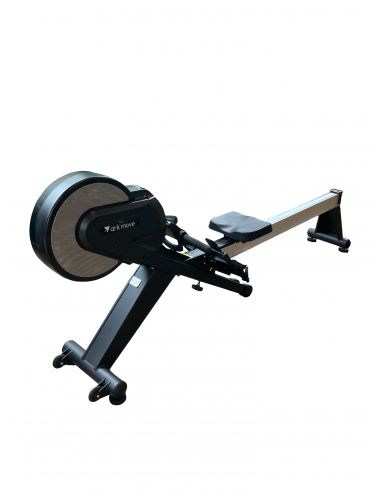Wind Resistance Magnetic Rower (Pre-order)
Please note that the lead time for this item is 8 weeks upon payment confirmation.
Interested customers are welcome to email us at hello@movementfirst.sg to arrange appointments to view the items in person at our customers' gyms.
Specifications:
Dimensions: 1.80m (L) x 0.45m (B) x 1.3m (H)
Weight: 50kg
Stainless steel fan
16 levels of resistance adjustment
Ergonomic cushion groove design
Adjustable foot straps
220v power
Air vs Magnetic Rowers
Movement First also offer Air Rowing Machines here!
Both kinds of rowers work the same muscles and offer users the same set of functions using the same techniques but read on to see which suits your uses better.
The resistance created by air rowers is due to the the "air" created by users when they pull the handle as it spins a "fan flywheel". As the flywheel spins, it must move the "air" in the front and side of the flywheel. The "air" around the flywheel creates resistance which then requires the users' force to move. As a user rows faster, the flywheel spins faster and must move more "air" at a greater resistance, which in turn requires more force to maintain. This allows them to mimic the resistance felt when rowing a boat on water closely.
As such, air rowers have an infinite number of resistance levels fully dependent on the amount of force exerted by users.
Magnetic rowers use a magnet in its flywheel to create resistance to counter the force exerted when the handle is pulled. While air rowers create resistance by moving the "air" around the flywheel, magnetic rowers utilize the magnet's currents to resist the flywheel's spinning instead.
Magnetic rowers also feature a magnet in its flywheel for braking that is adjustable using dials.
The main differences to keep in mind are
- air rowers are noisier due to the air movement in the flywheel while magnetic rowers are silent in comparison.
- air rower resistance is dependent on how fast a user rows while magnetic rower resistance can be set throughout the workout
Warranty Coverage:
Structural frame 10 years (does not cover wear and tear)
Seats, pedal straps, and grips 1 year (does not cover normal wear and tear)
Mechanical parts 3 years (provided regular maintenance is done)









